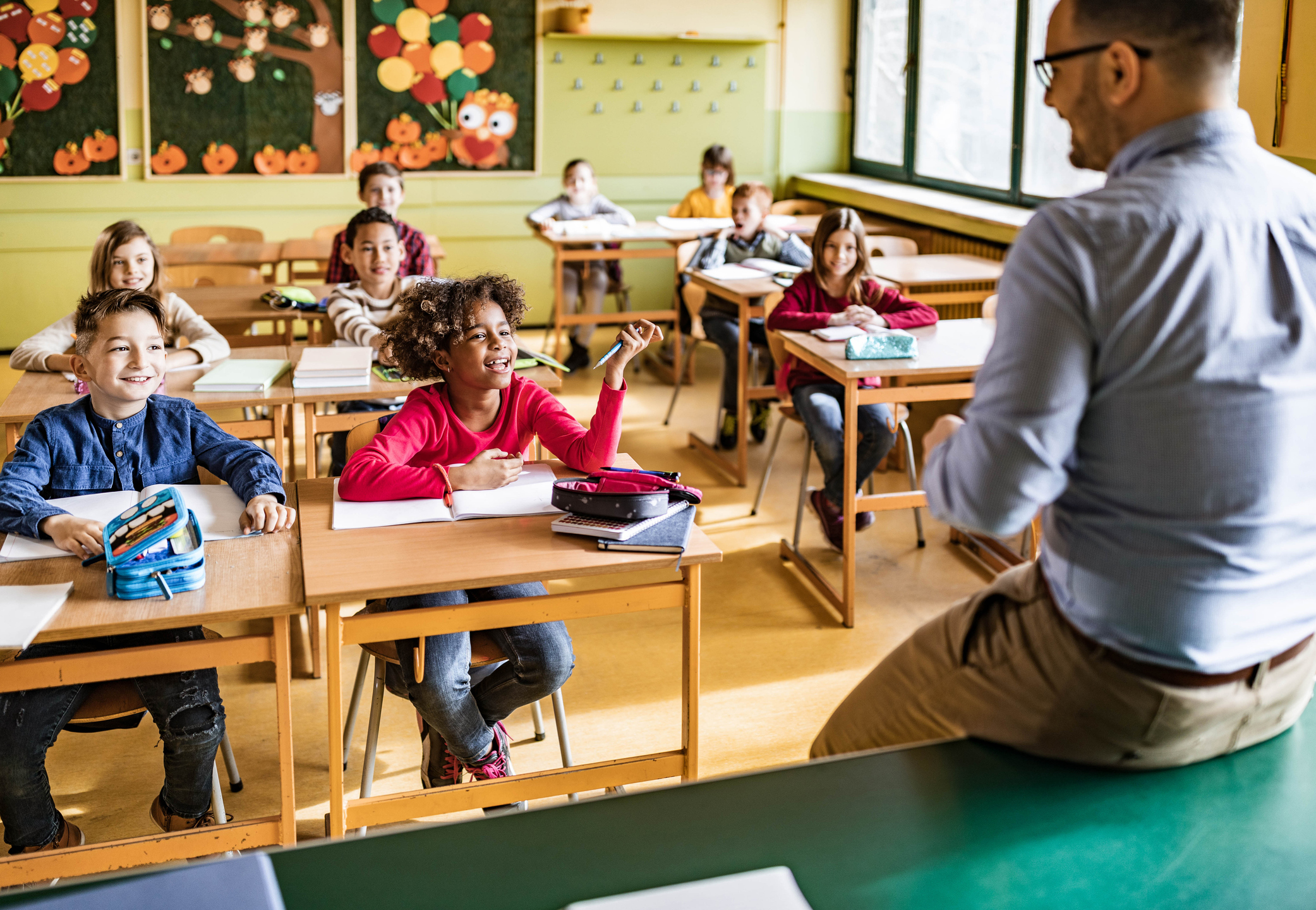Michelle Griczika (M. Ed.) is a certified educator with eight years of teaching experience in Massachusetts and has a foundation in classroom management.
Read on as Michelle dives into her top 5 strategies for creating a positive classroom culture, the importance of collaboration and community, and how to overcome potential challenges.

Creating a positive classroom culture is a crucial aspect of effective teaching. It sets the foundation for a classroom environment where students thrive academically, socially, and emotionally. A positive classroom culture goes beyond rules and routines; it encompasses the relationships, values, and practices that shape the learning experience.
Defining Positive Classroom Culture
A positive classroom culture refers to the atmosphere and dynamics within a classroom that promotes a sense of belonging, respect, and collaboration. Clear expectations, positive relationships, and a safe and inclusive learning environment characterize it. A positive classroom culture fosters student engagement, motivation, and overall well-being.
Benefits of a Positive Classroom Culture
Improved student engagement and motivation
When students feel connected to their classroom community, they are more likely to participate and engage in learning opportunities more actively. A positive classroom environment creates a supportive and stimulating culture that encourages students to take ownership of their education.
Enhanced student-teacher relationships
Positive relationships between teachers and students are essential for academic growth and social-emotional development. A positive classroom culture nurtures these relationships by fostering trust, open communication, and mutual respect.
Improved academic performance
A good classroom culture creates an optimal learning environment where students feel safe to take risks, ask questions, and explore new concepts. When students are supported and encouraged, their academic achievements are positively impacted.
Reduced behavioral issues and conflicts
By setting clear expectations and promoting a positive learning environment, teachers can prevent and address behavioral issues more effectively. A positive environment helps create a sense of community and shared responsibility, reducing conflicts and disruptions.
5 Ways to Create a Positive Classroom Culture
1. Establish clear classroom rules
To create a positive classroom culture, teachers must establish clear expectations for behavior and interactions. Involve students in the process by collectively setting classroom rules and norms at the beginning of the year. Reinforce these expectations consistently to create a sense of structure and accountability.
2. Foster a sense of belonging and inclusion
Building a classroom community based on respect and empathy is crucial for fostering a positive culture. Celebrate diversity, promote inclusivity, and create opportunities for students to collaborate and work together. Encourage mutual support, understanding, and appreciation of one another. Check in with students regularly to ensure they feel included and valued in the classroom environment.
3. Promote positive communication and feedback
Model positive language and active listening to foster respectful communication. Encourage open dialogue, provide opportunities for students to express their thoughts and opinions, and value diverse perspectives. Offer constructive feedback and recognize students' efforts and growth throughout the school year.
4. Cultivate a growth mindset
Teach students about the power of a growth mindset and its role in learning. Emphasize the value of effort, perseverance, and resilience. Encourage students to embrace challenges, learn from their mistakes, and develop a growth mindset approach to their academic and personal development.
5. Incorporate social-emotional learning (SEL)
Integrate social-emotional learning activities and practices into daily routines. Teach self-awareness, self-management, social awareness, relationship skills, and responsible decision-making skills. Provide opportunities for reflection, emotional support, and the development of essential life skills.
The Teacher's Role in Nurturing a Positive Classroom Culture
Teachers play a vital role in cultivating a positive classroom culture. They serve as role models and facilitators, creating an environment where students feel valued, respected, and supported. Teachers should engage in self-reflection and personal growth, continually seeking ways to improve their practice and enhance the classroom experience.
Building positive relationships with students is key to promoting a supportive classroom atmosphere. Get to know your students individually, show genuine care and interest in their lives, and create opportunities for meaningful connections. By fostering a positive teacher-student relationship, you establish a strong foundation for a positive classroom culture.
Collaboration and Community Engagement
Collaboration and community engagement are crucial elements in cultivating a positive classroom culture. By involving parents, guardians, and the wider community, teachers can create a network of support and promote a sense of shared responsibility for student success.
Parent and Guardian Involvement
Actively involve parents and guardians in the learning process. Share regular updates on student success, provide opportunities for parent-teacher conferences, and invite parents to participate in classroom activities or volunteer opportunities. When parents are engaged, they feel more connected to the classroom culture and can better support their child's learning.
Community Partnerships
Seek opportunities to collaborate with community organizations, businesses, or professionals. Invite guest speakers, organize field trips, or establish mentorship programs. Engaging with the community broadens students' horizons, exposes them to real-world experiences, and strengthens the connection between the classroom and the outside world.
Service-Learning Projects
Incorporate service-learning projects into the curriculum. Engage students in meaningful community service activities that address local needs or social issues. By actively contributing to their community, students develop a sense of social responsibility and empathy, fostering a positive classroom culture that values giving back.
By fostering collaboration and community engagement, teachers create a sense of belonging beyond the walls of the classroom. Students see the relevance and impact of their education, and the broader community becomes an integral part of their learning journey.
Overcoming Challenges and Sustaining a Positive Classroom Culture
Cultivating a positive classroom culture is an ongoing process, and teachers may face challenges along the way. Conflicts and negative behaviors may arise, requiring careful classroom management and resolution. It is essential to address these issues promptly, apply restorative practices, and promote a culture of understanding and empathy.
Adapt your strategies to meet the unique needs of your students. Every classroom is different, and what works in one setting may not work in another. Flexibility and willingness to adjust lesson plans are essential for sustaining a positive classroom culture.
Regularly evaluate the effectiveness of your strategies and make necessary adjustments. Seek student feedback, reflect on your practice, and collaborate with colleagues to continuously improve the classroom culture.
Final Thoughts
Cultivating a positive classroom culture is a transformative journey that benefits both teachers and students. By creating an environment where students feel valued, respected, and supported, we enhance their learning, well-being, and overall academic success. Through clear expectations, fostering a sense of belonging, promoting positive communication, cultivating a growth mindset, and integrating social-emotional learning, teachers can create a positive classroom culture that has a lasting impact on students' lives.
As teachers, let us prioritize the development of a positive classroom culture, recognizing its power to shape young minds, foster growth, and create a positive and inclusive learning environment. Together, we can inspire and empower our students to thrive and become lifelong learners.












